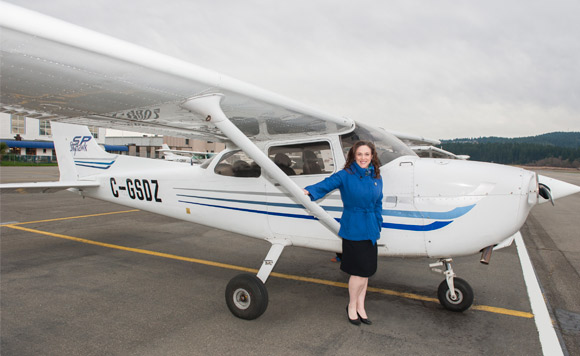by Paula Kully –
Since the beginning of human aviation, the desire to fly has been just as fascinating to women as to their male counterparts. However, due to social norms and prejudices, women didn’t truly enter the world of commercial air travel until the 1970s and even now face barriers in this male-dominated industry.
Most people are familiar with Amelia Earhart, who is seen as having paved the way for female pilots. She received her pilot’s licence in December 1921 and among her many accomplishments, she was the first woman to fly solo across the Atlantic. Sadly, Amelia’s plane went down in 1937 during an attempt to fly around the world. Her body was never found, but her contributions and her inspiration lives on.
Prior to Amelia, Raymonde de Laroche was the first woman in the world to receive a pilot’s licence on March 8, 1910. More than a century later, the industry continues to be a difficult one for women to break into. Canada didn’t see its first female commercial pilot until 1973 when Rosella Bjornson began flying for Winnipeg’s Transair. But even since then, the percentage of female commercial pilots hasn’t increased much since the ’70s and is still only about 6.8% of the total.
The process for obtaining a pilot’s licence involves a significant time and financial commitment, and in the past, this may have contributed to the low female enrollment. The first step to becoming a pilot is to take a Discovery Flight, such as the Victoria Flying Club offers, to determine if flying is really something you have an aptitude for. The trained team can usually tell if someone will make a good pilot. Then, there are a number of licences an individual can obtain, beginning with a recreational pilot’s licence which involves a minimum 25 hours flight training and costs just under $6,000. There is also a private pilot’s licence which necessitates 65 to 75 hours flight training at a cost of just over $10,500. A commercial pilot must complete a minimum 65 hours of flight training and 80 hours of ground school, at a cost of over $24,000. There is also the airline transport pilot, which is the highest licence that can be held by a civilian pilot. In addition, there are a number of ratings including night rating, sea plane rating, and multi-engine. These stringent licensing requirements and hours are prescribed by Transport Canada.
In our own community, at least one woman is working hard to open the doors for women who want to fly. Ramona Reynolds (above) is a pilot and the first female President of the Victoria Flying Club, which has been in existence since 1926. She is an absolute dynamo who is passionate about her work in the field and determined to make it easier for women wanting to become pilots. Growing up with a pilot father combined with her background in law, Ramona has the tools and skills to be a leader and mentor for others.
Seeing and experiencing the challenges women face in the field of aviation, Ramona was instrumental in starting a local chapter of the International Women in Aviation Club to provide a safe place for women to learn while they pursue their careers. While membership is restricted to women, participation is not. For example, the organization’s leadership learning series brought in many guests including coaches, leadership experts from Royal Roads, helicopter pilots, military pilots, and women who flew in the Arctic and Antarctica; at one point in the series the male attendance even surpassed the female attendance.
The organization has also coordinated flying events, orientation events, networking and mentorship events, a leadership learning series, held fundraising events for scholarships for women in every aspect of aviation and they have connected with the Aviation Leadership Foundation which was started by a woman who found that there were limited leadership opportunities for women in the industry.
Through her own experiences, Ramona has discovered that perseverance and embracing the responsibility and accountability that comes with being the President of the Victoria Flying Club has enabled her to be a leader and undoubtedly has made her a role model for other women who have their sights set on the sky.




